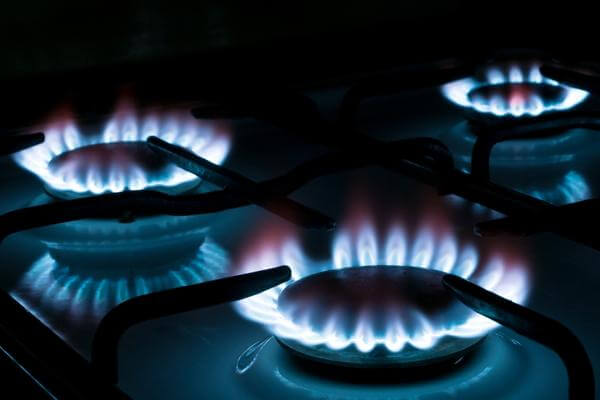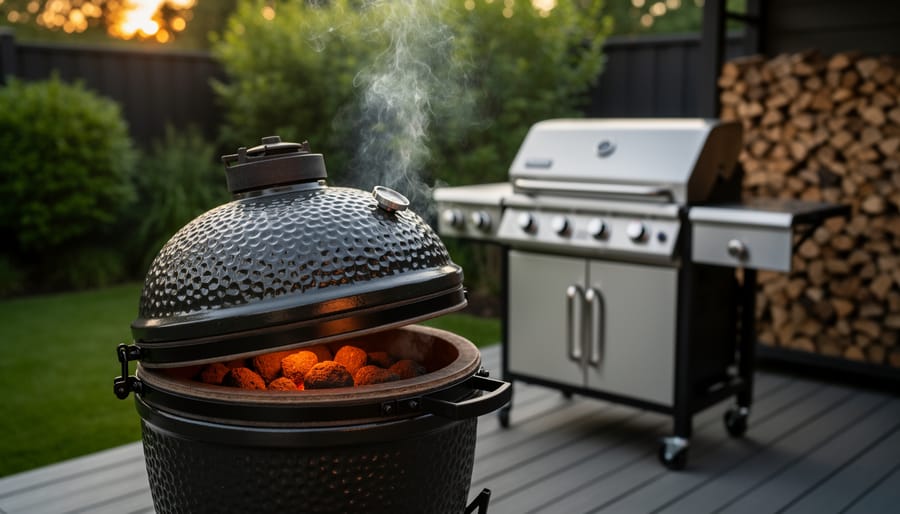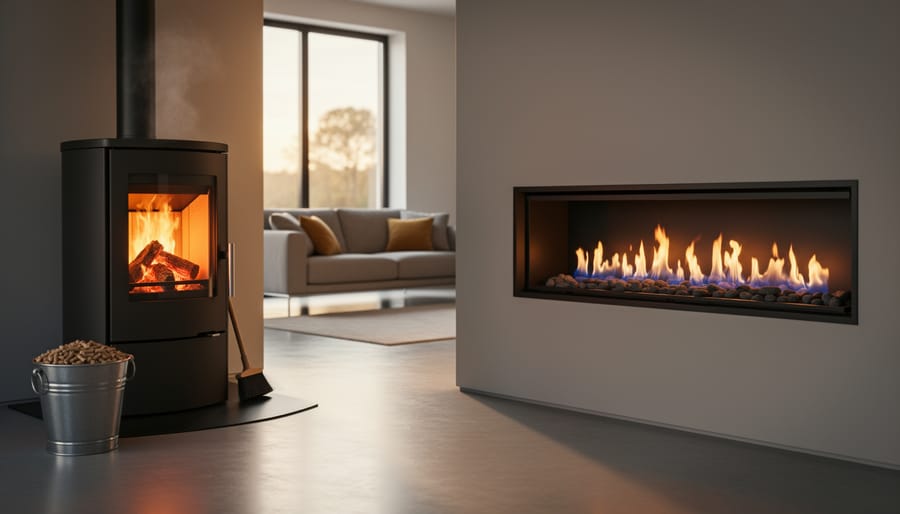Gas stoves are a convenient and efficient way to cook food. However, they have a few problems that can make your meal preparation more difficult. Fortunately, these problems are often easy to fix with simple tools. This article will cover the most common gas stove issues and how to fix them so you can get back to cooking!
11 Most Common Gas Stove Problems
1# Oven Not Reaching Temperature
If the oven is not reaching the desired temperature, it could be a few things. If your oven has problems with heating up, switch to another heat setting and see if that works. If it doesn’t work, remove any obstructions blocking the airflow within your ovens, such as spills, food debris, or loose wires/electric cords.
You can also try cleaning out any debris from around your heating elements or coil to get a better connection between these parts and the burner coils inside. If none of these steps help increase your heat output, contact an appliance repair technician for further assistance.
2# Gas Flow Problems
If the gas flow is not reaching your stove, there are several things to investigate. First, check to see if the gas is turned on at all. Ensure the knob is in its “on” position and not just turned off. If this doesn’t work, try turning it a notch or two.
You can also check to see if any other knobs are set incorrectly by turning them off and back on in their correct order (such as warming the ring first). If none of these tips helps your problem, call an appliance maintenance specialist as soon as possible.
3# Flame Spreader Dirty or Broken
If you notice flames burning inside your stove, it’s time for quick cleaning.
You can use soap and water to clean the flame spreader or any other cleaning product that will remove grease and dirt from the surface. If you are unsure how to access your stove’s burner assemblies, consult a professional or follow manufacturer instructions.
If the flame spreader is broken, don’t worry. There are replacement parts widely available online.
4# Igniter Problems
Igniters are the part of the gas stove that lights the flame. Igniters are usually made of ceramic or some other ceramic material, and they can be found in two places on your gas stove: either in your oven or on top of your cooktop. If you are having issues with lighting your stove, check to see if your igniter is faulty.
5# The Humidifier/dehumidifier/air Purifier Fan Won’t Turn Off and Runs Continuously.
If you have a portable humidifier/dehumidifier, you must turn off the device before cleaning or replacing its filter. This will ensure that no water spills into your home and causes damage.
First, turn off the humidifier by pressing the power button on its control panel. Then check that no leaks are coming from any of its hoses or pipes. Next, remove the front grill (if applicable) and empty any standing water within it.
If there are any mineral deposits on top of the inside walls, wipe them away with a rag or sponge moistened with vinegar; then rinse both with clean water until all traces of vinegar have been removed from the inside and outside surfaces of your gas stove’s casing. Finally, replace filters according to manufacturer directions before turning them on again!
6# Dirty or Damaged Orifice
The orifice is a small metal tube that restricts the flow of gas. It is located in the gas valve and can be damaged by debris in the gas line.
If your stove has been working for some time and suddenly starts having problems lighting correctly, this could indicate something wrong with the orifice in your valve. If the orifice is damaged, you must replace it as soon as possible.
7# Defective Ignition Switch
If you are having trouble getting your gas stove to ignite, here are a few things to check:
- First and foremost, is the ignition switch working correctly? If it seems to be broken or damaged in any way, you may need to replace it. Many gas stoves have three- or four-pronged switches that connect directly through wires from an electric current source. The switch should also be free of debris that could impede its function.
- Next, check for loose connections on the wiring surrounding the valve that connects directly with your gas line if these wires are loose or disconnected from their terminals on either end. If one has been pulled out entirely, you will have no power flowing through them!
You will want to ensure all of these connections are snugly secured before trying anything else; otherwise, there won’t be enough juice running through them for ignition purposes either way.
8# The Pilot Light doesn’t Light or Stay Lit.
Check the pilot light. If it is not working, you may need to replace the thermocouple in your gas range top (or thermopile if you have an electric range). Check for corrosion on the burner assembly as well.
9# Defective Thermostat
As you know, the thermostat is the device that regulates the temperature of your oven. It’s a common cause of gas stove problems and is easy to diagnose and repair. When it malfunctions, your oven may not heat up properly or shut off when it should be cooling down. The fix is simple: Replace the defective thermostat with a new one. Here’s how:
- Remove any food inside your oven and unplug it from its electrical outlet before beginning this repair project.
- Make sure you have all the necessary tools (screwdrivers, pliers) on hand before getting started with this DIY task; if you’re not confident in repairing your appliances, we recommend hiring a professional instead!
- Locate and open up your oven’s control panel by removing any screws holding it in place—usually, there are three or four screws at each corner of the panel—and then pull out its front cover gently using both hands until all wires connected underneath come loose too. Finally, remove these wires entirely so they don’t get damaged while working inside them.
10# Wiring Issues
If you are having problems with your gas stove, you can check a few things before calling in an electrician.
First, check the electrical panel. Check for loose wires or frayed wiring and ensure the circuit breaker hasn’t been tripped. If it has been tripped, reset it so that power from the electric company flows again.
Next is to check inside the stove itself for excess debris that could be causing problems with combustion gases or sparks from metal-on-metal contact inside your oven door or burner grates. You will also want to run a wire brush over any electrical connections within reach of cleaning products because these will corrode if not properly maintained regularly.
11# Defective Valve
The valve may be defective or broken if your gas stove doesn’t ignite. The valve is a small cylinder with a diaphragm inside. It turns the gas on and off on your stovetop, so if you have any problems with it, you can replace it yourself or have an HVAC technician do it for you.
The valve is usually located near the gas line coming into your home. If this is true for your stove, disconnecting and reconnecting that line should solve any issues with lighting up your burners (or igniting heat).
Solving Gas Stove Problems
If you are having trouble with your gas stove and don’t know how to fix it, you can do a few things to solve the problem.
First, try turning the valve back and forth. If that doesn’t work, turn off the pilot light switch and wait five minutes before turning it back on. Then check if there is any more gas leaking out of your stove.
Second, pull out all your burners and check them for cracks or other signs of damage that could be causing problems with your stove’s functionality. It might look like something is stuck between two parts. You will want to scrutinize each burner. If you find any damage or wear and tear, consider replacing that particular piece immediately!
Thirdly, unplug your range from its electrical outlet before beginning this step: remove all parts inside the oven compartment by removing screws or bolts with an appropriate-size screwdriver. Take these pieces outside so they aren’t hot anymore, then reassemble them using a small towel dampened by water mixed with dish soap as a lubricant while assembling/disassembling these components back into place again afterward.
Also read: Problems with Baking with the Gas Oven
Gas Stove Problems
Well, that’s a wrap! Hopefully, this guide has been helpful as you navigate the most common gas stove problems. I know it can be frustrating when something goes wrong in your home or workplace, but with patience and determination, it’s possible to solve any problem.
Just remember: if you ever get stuck on something for too long and need fresh ideas about how to proceed, take a break from your problem-solving by doing something else! Sometimes taking some time away from an issue helps us see things from another perspective—and gives us new ideas about how best to move forward.






